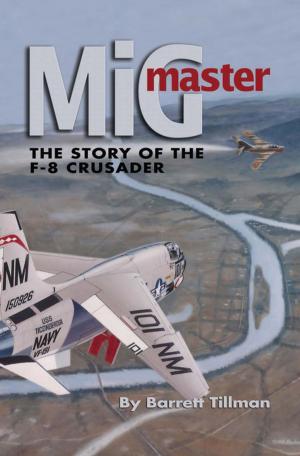| Author: | Morris | ISBN: | 9781682472538 |
| Publisher: | Naval Institute Press | Publication: | October 15, 2017 |
| Imprint: | Naval Institute Press | Language: | English |
| Author: | Morris |
| ISBN: | 9781682472538 |
| Publisher: | Naval Institute Press |
| Publication: | October 15, 2017 |
| Imprint: | Naval Institute Press |
| Language: | English |
Strategic bombing is likely the most studied element in Aviation History. The shelves of libraries are filled with books on the topic, yet relatively little is known about where the concept originated or how it evolved. Most of the books on strategic bombing fall into three categories: descriptions of bombing campaigns, critiquing whether they succeeded, or describing why different nations pursued individual visions of airpower. While these are important analyses, there is no one complete study of the idea behind America’s vision of strategy bombing that answers: how it originated, why it changed over time, the factors that shaped change, and how technology molded military doctrine? This book provides just such a full spectrum intellectual history of the American concept of strategic bombing. In the minds of forward thinking aerial theorists the new technology of the airplane removed the limitations of geography, defenses, and operational reach that had restricted ground and naval forces since the dawn of human conflict. With aviation, a nation could avoid costly traditional military campaigns and attack the industrial heart of an enemy using long-range bombers. Yet, the acceptance of strategic bombing doctrine proved a hard-fought process. The story of strategic bombing is not that of any one person or any one causal factor. Instead, it is a twisting tale of individual efforts, organizational infighting, political priorities, and most important technological integration. At no point was strategic bombing preordained or destined to succeed. In every era, the theory had to survive critical challenges. By tracing the complex interrelationships of these four causal factors, this book provides a greater understanding of the origins and rise to dominance of American strategic bombing theory. The Origins of American Strategic Bombing meets this need in two ways. First, it explains the intellectual process of going from Wright Flyers to B-17 formations over Germany. Next, it identifies the factors that shaped that intellectual development. In doing so, it challenges the Air Force’s self-identity with a much more complex explanation. It is no longer the story of Billy Mitchell or The Bomber Mafia, but one of a complicated interweaving of events, people, organizational cultures, technology, and politics. The book is unique as it integrates military, political, cultural, and technological history to explain the rise of strategic bombing as the dominant American vision of airpower as it entered World War II.
Strategic bombing is likely the most studied element in Aviation History. The shelves of libraries are filled with books on the topic, yet relatively little is known about where the concept originated or how it evolved. Most of the books on strategic bombing fall into three categories: descriptions of bombing campaigns, critiquing whether they succeeded, or describing why different nations pursued individual visions of airpower. While these are important analyses, there is no one complete study of the idea behind America’s vision of strategy bombing that answers: how it originated, why it changed over time, the factors that shaped change, and how technology molded military doctrine? This book provides just such a full spectrum intellectual history of the American concept of strategic bombing. In the minds of forward thinking aerial theorists the new technology of the airplane removed the limitations of geography, defenses, and operational reach that had restricted ground and naval forces since the dawn of human conflict. With aviation, a nation could avoid costly traditional military campaigns and attack the industrial heart of an enemy using long-range bombers. Yet, the acceptance of strategic bombing doctrine proved a hard-fought process. The story of strategic bombing is not that of any one person or any one causal factor. Instead, it is a twisting tale of individual efforts, organizational infighting, political priorities, and most important technological integration. At no point was strategic bombing preordained or destined to succeed. In every era, the theory had to survive critical challenges. By tracing the complex interrelationships of these four causal factors, this book provides a greater understanding of the origins and rise to dominance of American strategic bombing theory. The Origins of American Strategic Bombing meets this need in two ways. First, it explains the intellectual process of going from Wright Flyers to B-17 formations over Germany. Next, it identifies the factors that shaped that intellectual development. In doing so, it challenges the Air Force’s self-identity with a much more complex explanation. It is no longer the story of Billy Mitchell or The Bomber Mafia, but one of a complicated interweaving of events, people, organizational cultures, technology, and politics. The book is unique as it integrates military, political, cultural, and technological history to explain the rise of strategic bombing as the dominant American vision of airpower as it entered World War II.















